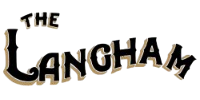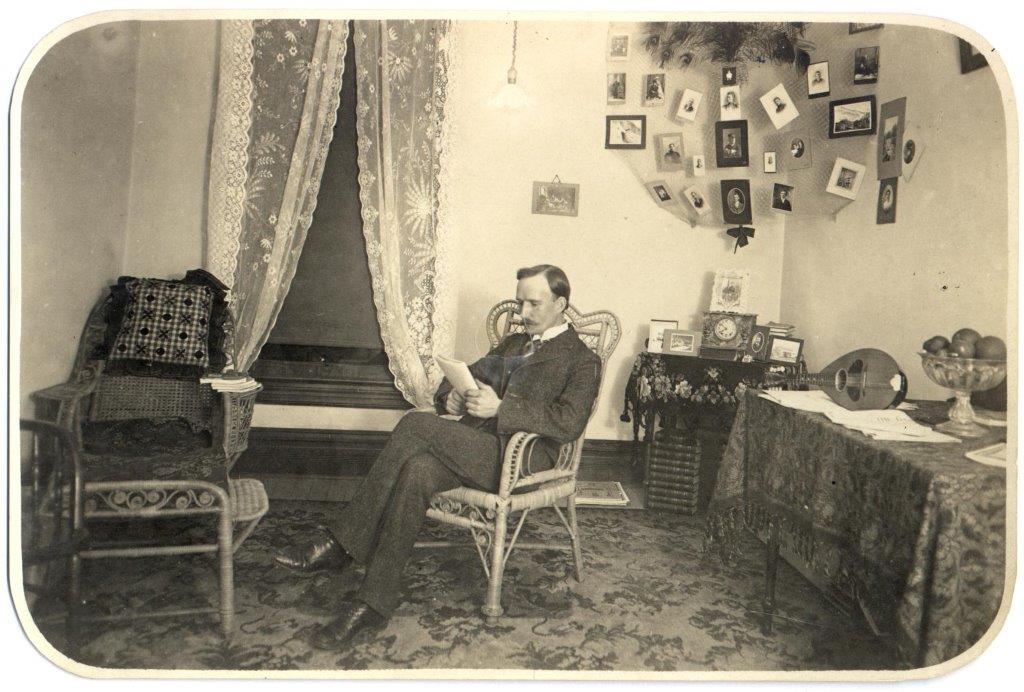Rowdy days for the Langham Boys
Written by: Greg Nesteroff
Originally published in the Nelson Star on Jan 3, 2015
Fourth in a series
Previously in this series, we’ve seen that Charles J. Kapps (1866-1958) built the Langham in Kaslo in 1896-97 and operated a bottling works out of a now-demolished addition on the building.
In 1902, he sold his business to employee Joseph J. Storms and Arthur W. Goodenough of the Kaslo Brewery. The bottling works was still listed in the civic directory as of 1905, but folded sometime before 1910.
Kapps held on to the Langham until August 26, 1910 when, according to tax records, Alfred John Curle and Arthur R. Heyland acquired it.
Heyland was a surveyor and civil engineer, responsible for laying out the Poplar and Gerrard townsites as well as additions to Sandon and Kuskonook.
Curle was born in Maidstone, Kent, England in 1867 and came to Kaslo around 1904, where he was a member of the office staff of the Kaslo and Slocan Railway. He was also a land agent, fruit growers’ association secretary, an alderman in 1916-17, and a well-loved local character.
He was president of the local prospectors association and had many mining claims in the area, including several manganese properties on the east side of the Kaslo River, seven kilometers northwest of town. Although he discovered them in 1907, he didn’t stake them until 1917. He shipped ore for three years, but the material proved to be of low quality.
Curle was interested in sports of all kinds. He provided scholarships and money for athletic equipment, donated swings and slides for the park playground, and put up a school trophy called the Curle Cup. He’s also credited as the founder of the Kaslo Golf Club and was reportedly the first to own golf clubs in Kaslo.
In the late 1990s, some of Curle’s effects turned up, including a box of tarnished silver trophy cups, which are now in the Kootenay Lake archives. With his motorboat Red Wing, he won races in 1912 and 1913.
Mary Johnson, whose family came to Kaslo in 1934, said recently that her most vivid memory of Curle is as a boy scout leader. She also recalls he had a cabin about a mile and a half south of town with a slough behind it. “It wasn’t very big, but we used to go skating there,” she said. “He made sure we had a fire to sit beside as we changed into our skates. He was very good with young people.”
Kathleen Butler Elder wrote in 1998: “Mr. Curle would let the children know when the ice was safe for skating. He would have a roaring bonfire going, and cookies to pass around when they were tired and hungry. And all agreed that Mr. Curle was good at keeping the boys in order, though he did it in the kindliest way.”
Curle reportedly looked after an old Chinese man called Charlie. Elder said Curle also belonged to a group of Christian Scientists who met for many years in the McQueen home. She went to Sunday school there and got to know him well.
“When I was about 12, I developed an ugly goiter on my neck. My mother asked Mr. Curle to treat me. I don’t remember any laying on of hands or anything of that sort but I do remember his kind voice as he talked to me. And my goiter was soon gone!”
In a 1979 interview held by the Kootenay Lake archives, Gus Carney further remembered the man Kaslo children called “Unc Curle”: “He was the kids’ pal. That was in the old Langham. Yeah, we had great times there. A real rabbit warren, the Langham, at that time. Mostly unoccupied and Curle stayed mostly in one room, just his own living quarters. It was nothing to have 10 or 12 kids in the quarters of his. Sitting on the bed and boxes or anything. He was the greatest old man in the world.”
(A photo in the Kootenay Lake archives showing Curle in his room is reproduced above for the first time.)
Tuffy Garland, interviewed in 1989, said there used to be gymnastic and boxing equipment in the building and “people just helped themselves.”
Life in the Langham
Maitland Harrison recalled in a 1972 interview: “I think it was in 1911. Mr. Curle, who owned the Langham building at that time, was also agent for the land up on Shutty Bench. There was a big boom of fruit and about 20 of us bought land up there.
“Of course no one had any houses, they just had bought, and so when winter came along, we all went into the Langham. Mr. Curle was very reasonable. He practically gave us the rooms for nothing. I think that was $2 a month or something ridiculous like that and a lot of us had rooms in the Langham for the winter.
“My brother and myself had one room. There were two Guthrie brothers who had another room, Allsebrook had another room, Frank Allan and altogether we were known as the Langham Boys.
“We lived in the Langham and we were like boys at school again. We’d fight and turn each other’s beds upside down if you didn’t get up in the morning early and it was quite a rowdy place. That just happened for the winter, then next year various people got their houses built and wanted out.”
Curle is said to have held prospecting classes in the Langham, and taught his tenants how to recognize various minerals.
In Pioneer Families of Kaslo, a Mr. Brooks, whose first name was not given, recalled the Langham “was almost all occupied by young English boys, who were building ranches up and down Kootenay Lake. Many went off to fight in the First World War and some never returned.”
The 1911 census provides a list of the Langham Boys as of mid-June: in addition to owners Curle and Heyland, there’s William Burgess, 23, an accountant; Llewellyn McLean, 45, whose occupation is illegible but may be contractor; Andrew Lemon, 57, a nursery salesman; plus William Deboe, 25, and Bernard Colchester, 21, who both appeared to work for Heyland’s land surveying practice and both suffered untimely demises.
Deboe drowned at Campbell River in 1913, although the circumstances are unknown.
Colchester enlisted for the First World War in January 1915 and was with the 6th Battalion of the British Army’s Bedfordshire regiment when he was killed in France on April 24, 1917. He isn’t named on the Kaslo cenotaph, so he presumably moved away before enlisting.
The Mr. Allsebrook that Maitland Harrison referred to above was historian Naomi Miller’s father Alan, who bought property on Shutty Bench in 1911. He mentioned some of the Langham Boys to her, but she doesn’t recall him specifically mentioning living there.
During the war, her father kept receiving notices to report for duty in Britain, although he would have been declared unfit to serve as he had been deaf since childhood and had a double hernia.
“However, he did go home [to England] in 1916 and was set to work in a factory making wooden propellors. He trained as a wood and stone carver. Here he was given wood lopped to approximate shape, then had to carve it and spin it till it was balanced.”
At the war’s end, he came back to Canada with some of the last returning army volunteers.
It’s not apparent from the 1921 census who, if anyone, then lived at the Langham, but Curle owned the building through at least 1942. His final home, which is still standing, was on D Avenue. He died October 25, 1955, age 88, a lifelong bachelor.
Next: The Langham’s changing faces
Previously: Part 3: The life and times of Charles Kapps

